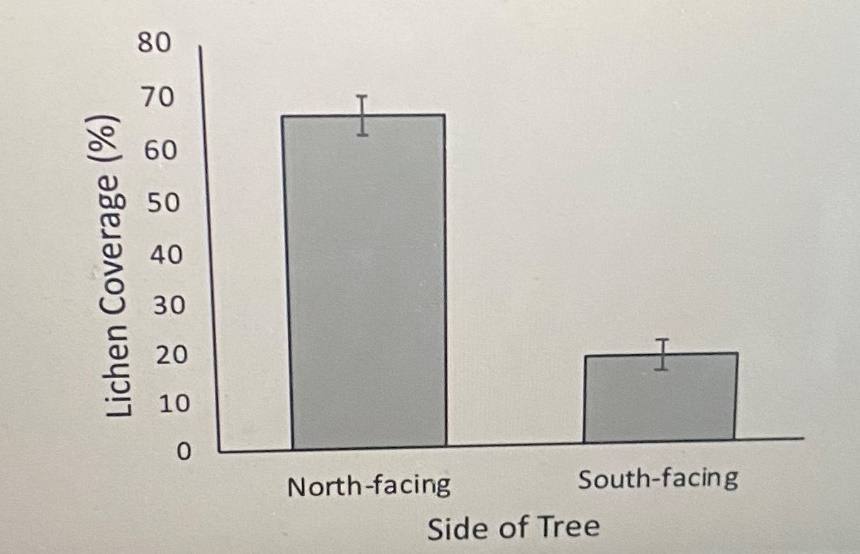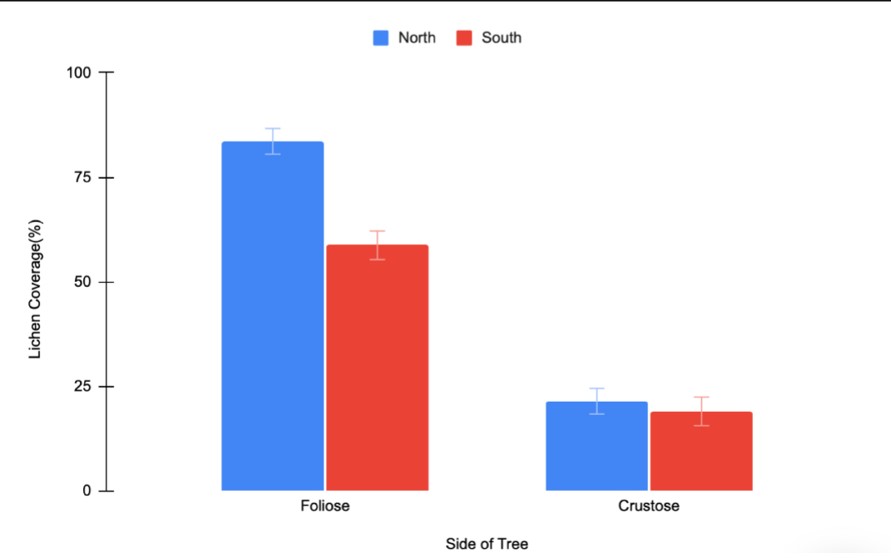Introduction
Lichens are fungus and microalgae-based organisms. Lichens are important primary producers, fixers of atmospheric gases, and contributors to mineral cycling and integration. Lichens are environmental bioindicators. Lichens attach to live surfaces like tree trunks. These bio-substrates have enough light and complexity for lichen development (Nunes et al.). Older trees are rougher and favor institution, influencing lichen abundance.
Methods
The study site was Mansfield Hollow State Park, Chaplin CT 06235. However, several sites within each area did not meet our sample requirements. Each tree was spaced at least 5-10 m apart to ensure random sampling. There were no road or forest border tests since we only examined living trees with at least 10 cm DBH. A narrower square was used to visually assess the cover inside of the trees in each quadrat. The frame was 1.5 m up each tree trunk in the cardinal points, with the hole at that point. Where lichen developed on top of bryophytes, the surface cover of both was evaluated.
Indications of results about the original hypothesis and reasoning
The distribution pattern of lichen growth conditions within habitats may indicate dispersion limitations and the outcome of abiotic stressors on propagative choices. Sexual and asexual reproduction are both possible in lichens, and some species generate vegetative propagules.
Ecological/biological implications of findings
As a consequence of these results, the variety of foods found in forest flora that include lichens may be linked to varying optimum conditions for establishment and development. Water availability or saturation is essential in abiotic settings because it affects CO2 exchange on the lichen thallus surface and serves as a dispersion mechanism for the reproductive phase.

For example, low humidity, canopy openness, and substrate rugosity reduce substrate availability and water availability for photobiont formation and maintenance. These factors may decrease Grassland richness compared to Forest. However, increasing humidity might cause niche competition with other plants that need more water, including mosses and ferns (Nunes et al.).

This theory supports our conclusion that forests have a fantastic species diversity since increasing wetness encourages lichen growth and increases competitive pressure for space, thus affecting species coexistence.
Things that should be considered in future studies
Future research should involve more time since this experiment’s time, and resources were restricted. Existing data will be used in future studies.
Work cited
Nunes, Lucas et al. “Abiotic Effects on The Cover and Richness of Corticolous Lichens on Araucaria Angustifolia Trunks.”Acta Botanica Brasilica, vol 33, no. 1, 2019, pp. 21-28. Fapunifesp (Scielo), Web.